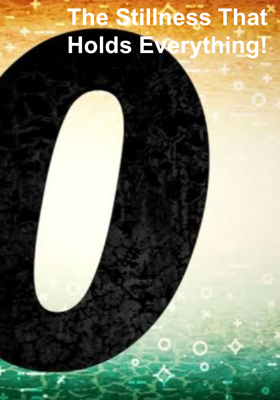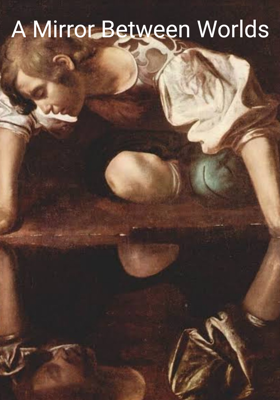How KP's Celebrate Shivratri?
How KP's Celebrate Shivratri?


***This article wl give you an insight into the importance of Mahashivratri in the KP community.
Kashmir's being staunch followers of Shavism, they celebrate this auspicious day in a very unique way. It is a 23 days celebration celebrated exactly like we do preparations for a wedding. I am sure the readers will enjoy this.
The uniqueness of Mahashivratri in Kashmiri Pandits.
Shivratri, the most sacred religious function observed by Kashmiri Pandits commonly known as HAERATH is celebrated for seeing the cosmic vision of Lord Shiva and Lordess Parvati. Since Kashmiri Pandits are the followers of Shaivism, Mahashivratri is celebrated for 23 days beginning with the 1st day of Phalgun Krishna Paksha, generally known as “Parva” or “Hurya Okdoh” or “Krishna Paksha Pratipda. The significance of this day is very unique in the community of Kashmiri Pandits.
HAERATH
Nilamat Purana written in 6/7th century AD mentions Shiva Worship on Shivratri was prevalent in Kashmir right before the arrival of SWARSAT BRAHMINS from plains. One of the conditions put forward by King NILA for permitting these SWARSAT BRAHMINS to settle in the valley was to observe their festivals which included a celebration of the festival of SHIVRATRI. After a passage of time, this festival came to be called HAERATH. There are different explanations given to illustrate the concept behind this.
One belief is that Haerath signifies the emergence of Vatuk Bhairav {in the ancient past from an earth pot}, (Bhairav is one of the manifestations of Rudra) Haerath falls on the 12th or 13th day of Phalgun Krishna Paksha and that is why KP’s celebrate it on this day and, as Vatuk Bhairava emerged from an earthen pot, earthen vessels were used; Shivchuturdashi of Phalgun Krishna Paksha is called Maha Shivratri and it is a coincidence that two festivals are celebrated together.
Another view is that Haerath is the altered form of Hari-rat divine night or Harishrat- the night of delight.
Another version is that it has been derived from HAIRAT- a Persian word for utter surprise. It is stated that during the Pathan Rule, Jabar who was governor of Kashmir, ordered that instead of Feb/March the festival should be observed in the month of June-July (HAR in Kashmir) which are the hottest months in Kashmir. Kashmiri Hindus obeyed his orders and celebrated the festival in HAR (June-July). The forced alteration of date brought innumerable curses upon the valley. There was untimely snowfall in the hot summer. The Pathans expressed HAIRAT- utter surprise at this. Since then Shivratri came to be known as Haerath. There is a Kashmiri couplet that records the perversity of Jabar- which is as follow:
"Wuchiv Kya Gav Jabbar Jandas Harras Ti Kuran Wandh" which means:
(Fie on the wretched Jabar for having turned summer into winter)
**** It is important to note here that despite all favourable conditions climatically, this auspicious day, will definitely be blessed by Lord Indra with showers of rain in plains and snowfall on high altitudes, EVEN TO THIS DAY!
(EARLIER IT USED TO SNOW ON PLAINS TOO AND I HV WITNESSED IT THROUGHOUT MY CHILDHOOD.)
THIS IS QUITE MYSTIC BEYOND THE HORIZONS OF THE HUMAN MIND.
This is the king of festivals for the entire KP community. It spans over a period of 23 days starting from 1st day of the Krishan Paksha of Phalgun (Indian Lunar Calandar) to Ashtmi (8th Day) of Shukla Paksha. It encompasses all social, religious and even cultural activities. From the very 1st day of Phalgun Krishna Paksha, known as (Hurya Okdoh) – The muhrat of House cleaning to celebrate the wedding of Shiv-Shakti), to 3rd day as ( Zang Trai – from this day to the 10th day the married women visit their parents to get gifts and blessings), to 6th day (Hurya Shyam) the whole house and the household things are cleaned. Materials to be used in Puja such as earthenware, walnuts, dry grass (for making Ari – a small round base to settle the pots on them) etc. are collected, 7th day (Hurya Saptami) and 8th day (Hurya Ashtmi) are the days for devotional prayers at home and congregational prayers with bhajans in temples. 10th day (Dyara Daham) is the day when the daughter-in-law of the household who visits their parents during these days return back to their in-law's house along with some Shaguns for their happiness. Such as Kangri (a small earthen bowl, externally woven with willow work to give warmth during winters, this can be easily carried anywhere) Salt, bread leaves (chuchas) and cash (Haerat bhog). 11th day (Ekadashi-Gada Kah ) and the 12th day (Wagur Bah) are special days for the worship of Bhairwas. Fish in large quantities are procured and processed but not cooked. Wagur Bah i.e on the 12th day a pot filled with water is installed at a place reserved for Puja and this remains there till the last ritual of the event.
Wagur :- A pot filled with water and decorated with flowers is called Wagur. It represents Lord Shiva's messenger, who went to Himalaya King Himvat's house, with proposal for his daughter , Parvati's marriage with Lord Shiva".
The night falling between Wagur Bah, 12th and 13th day Trayodashi (Haerath Truvah) is main time for Shiva worship. Vatuk Puja is a very elaborate worship where Lord Shiva, Parvati , Bhairwa and Shiva Ganas are worshipped with full devotion. From old times there was a tradition of offering cooked meat and fish to bhairwa on this day. 14th day (Chaterudeshi) which is celebrated as Maha Shivratri by Hindus all over India by keeping a strict Upavas (fast) and prayers, is a day of feasting for Kashmiri Pandits. They call it Salam. On this day a multicuisine of non veg dishes were cooked and friends from other communities were invited on lunch. It used to be a day where we could see brotherhood and unity reflecting amongst all the communities. After exodus the scenario has changed and so many shifts have been observed in age old traditions and rituals.
Puja Viddhi:
Earthen pots (which now have been replaced by bronze after Kashmir Exodus, as these pots were made by potters from muslim community) are rinsed with water and then decorated with flowers, moli and sindhoor. These pots are placed in a defined manner in rows ; as for each pot symbolises a particular diety. Each pot has a defined place (as given below) where the puja is performed. (The entire set up remains there for 11 days., till the 8th day of full moon days.)
Bhramkalash: A pot in the left extreme corner symbolises Lord Gansha.
Gagar: Symbolises Vatuk Bhairwa, placed next to Lord Ganesha.
Ramgud: Symbolises Raman Bhairwa.
Dul: Symbolises the companions of Vatuk Bhairwa and other bhairawas & dieties. (Cooked non veg food is offered to Dul as a sacred sacrifice to Bhairawas. (However, now most of the KP’s have switched to veg offering instead of non-veg.)
The name of the Bhairwas:
Vatuknath, Bhutbaleibhyh, Betalraj, Bahukhatkeshawaraya, Sthankshetrpalaya, Mangalrajaya, Yogini balebhyah, Vishvaksenaya, Jayksenaya, Tejaya, Chandaya.
Rishi Dulij: Symbolises rishis & munis. Veg food is offered to rishi dulij.
Sanivari: Symbolises “Yogniyans”.
Kshetrapal: Symbolises happiness, prosperity, purity , enlightemnet.
Sanipotul & Dupchoor: Symbolises Lord Shiva & Lordess Parvati
Vagur, And other pots (listed above) which are 12 in number symbolises 12 Jyotrilingas. All the sacred pots are filled with walnuts and immersed in water, due to the belief that Lord Shiva loves Walnuts the most amongst nuts.
The Shiv puja starts late night on Triodashi and it continues till mid night or early morning of the following day). Cooked food is offered to Dulij (The vessel that represents Vatuk Bhairav with other Bhairavas & dieties). Hawan & Hom is the main part of the puja. The puja ends with an Arti.
SALAM:- This is a festive day when multicuisine dishes are cooked and friends and close relatives like son-in laws, sisters and friends from the other communities are invited to enjoy the feast. People who render services to the community such as washerman, barbers, postman, electricity maintenance man & such other like persons come to offer greetings receive gifts of cash. The music lover bands come & dance (especially if there is a new born or a new bride in the house) and receive hefty presents of cash. Since most of those people are Muslims who greet with "SALAM", so the day has come to be known as SALAM.
The most lucrative part for children is to get cash as a gift from all the seniors.
There was also a tradition of playing a unique kind of a game (Harran gindun) with molluskan seashell. A GREAT FUN which is getting extinct after the exodus.
In the evening brief prayers are offered to Vatuk Deity by the head of the family from the day of Vatuk Puja to Amavasi. The pots are filled with fresh water everyday. On the day of Amavasi (Dunya Mawas) the ladies of the house carry Vatuk vessels to the river bank in the morning and empty all water content there. On their return back home, they are promised due reward in the form of blessings by house holder.
All functions of this festival come to an end on 8th day of Shukla Pakash when all the flowers with which Vatuk was decorated alongwith aries (The grass ring on which Vatuk vessels were kept) are carried to river bank in the evening for the immersion in the river.
An earthen lamp with burning oil wick is placed on the floating grass ari. The floating of lamp is reminiscent of a similar scene at HARIDWAR during evening prayers.
There used to be a tradition of burning off KANGARIs on the 8th day of Shukla Paksha as a mark of final celebration of Mahashivratri and also bidding farewell to winter season.
It is a festival of great social importance to Kashmiri Pandits, when all family members of all ages assemble together to pray to God and receive blessing of elders. Children have special fun. While elders remain busy with worship, house ladies get an opportunity to show their art of cooking.Daughters of all ages visit their parents on the day of SALAM.
Parshad (walnuts which remain immersed in water in the vessel till amavasya) is shared with all neighbours & relations thus strengthening social bonds. Esoterically the light of Chaturdasih/Amavash (darkest in Phalgun Krishna Paksha Amavasa) is the ideal time for the union of Jiva (man) and Parmatman (Lord Shiva) the supreme sources of perennial joy & eternal beauty. It is a dawn of knowledge of the supreme self. At the mundane level, this festival symbolizes the union of Goddess Parvati or Durga, The Divine, Shakti that stands with Shiva who is all-pervading but static.
*****May Lord Shiva and Lordess Parvati bless the entire humanity with wisdom, purity and courage, compassion to tap the innate Buddhahood inherent in each individual. May there be peace on this planet!


























































